How to Identify and Treat Fertilizer Burn on Plants: A Complete 2024 Guide
- April 19, 2024
- 0 comment
If you’ve noticed your plants looking scorched or wilted, they might be suffering from fertilizer burn. This guide for 2024 details how to identify and treat fertilizer burn on plants, ensuring your garden remains lush and healthy.

We’ll cover everything from spotting the early signs of damage to implementing effective treatment strategies and preventing future issues. With easy-to-follow advice, this guide is perfect for gardeners of all levels aiming to protect their plants from the harsh effects of over-fertilization.
Table of Contents
- Understanding Fertilizer Burn
- Identifying Fertilizer Burn
- Treating Fertilizer Burn
- Preventing Fertilizer Burn
- Advanced Preventive Measures Against Fertilizer Burn
- Conclusion
- FAQs
Understanding Fertilizer Burn
What is Fertilizer Burn?

Fertilizer burn occurs when plants are exposed to excessive amounts of nutrients, particularly those found in chemical fertilizers. This condition primarily arises from an overabundance of soluble salts, which include compounds like potassium nitrate, ammonium phosphate, and others commonly found in fertilizers. These salts absorb moisture from the soil and plant tissues, leading to dehydration and ionic toxicity.
- Osmotic Stress: Soluble salts increase the osmotic potential of the soil solution, which means plants need to expend more energy to absorb water. This stress can dehydrate the plant and lead to wilting.
- Ionic Toxicity: Excess ions from salts like Na^+ (sodium) and Cl^- (chloride) can disrupt cellular processes in plants, leading to necrosis (death of tissue) and chlorosis (yellowing of leaves due to lack of chlorophyll).
Causes of Fertilizer Burn
Fertilizer burn is most commonly caused by the misapplication of synthetic fertilizers that are high in soluble salts. Below are detailed mechanisms through which these fertilizers affect plant health:
- Increase in Soil Salinity
- Mechanism: When too much fertilizer is applied, the soluble salts accumulate in the soil, significantly increasing its salinity.
- Effect on Plants: High salinity increases the osmotic potential of the soil solution, making it difficult for roots to absorb water, leading to dehydration and reduced nutrient uptake.
- Nutrient Imbalance
- Mechanism: Excessive nutrients can compete with each other for uptake by the roots, leading to an imbalance.
- Effect on Plants: Certain nutrients can inhibit the absorption of others when present in high concentrations, for example, excess potassium can interfere with magnesium uptake, causing deficiency symptoms.
- Physical Root Damage
- Mechanism: High concentrations of salts can cause physical damage to root cells, disrupting their function.
- Effect on Plants: Damaged roots are less efficient at water and nutrient uptake, compounding stress and dehydration issues.
Understanding these causes and their effects is essential for effectively preventing and treating fertilizer burn.
Scientific and Quantitative Analysis
To provide a clearer understanding, below is a table depicting the typical salt thresholds that can lead to fertilizer burn, and the corresponding effects on plant physiology:
| Compound | Typical Concentration in Fertilizer | Threshold for Stress (mg/kg of Soil) | Physiological Impact on Plants |
|---|---|---|---|
| Potassium Nitrate | 13% K, 44% NO3 | >1500 | Osmotic stress, reduced water uptake |
| Ammonium Phosphate | 12% N, 61% P2O5 | >1000 | Root cell toxicity, disruption in nutrient uptake |
| Urea | 46% N | >2000 | Nitrogen toxicity, inhibition of potassium absorption |
Note: The thresholds vary based on soil type, plant species, and environmental conditions.
Advanced Insights
For the scientifically inclined and meticulous gardeners, understanding the exact mechanisms by which salts affect plant cells can guide more precise fertilizer applications:
- Cellular Osmotic Adjustment: Plants may accumulate organic solutes or ions in response to osmotic stress, but excessive salts disrupt this balance.
- Enzyme Inhibition: Salts like sodium and chloride can inhibit key plant enzymes, reducing metabolic efficiency.
- Stomatal Conductance Reduction: High internal salt concentrations cause stomata (pores on leaf surfaces) to close to conserve water, reducing CO2 uptake and photosynthesis.
Effective management of fertilizer practices, guided by both qualitative symptoms and quantitative soil testing, can prevent the harmful effects of fertilizer burn, ensuring plant health and garden vitality.
Identifying Fertilizer Burn
Early Signs and Symptoms
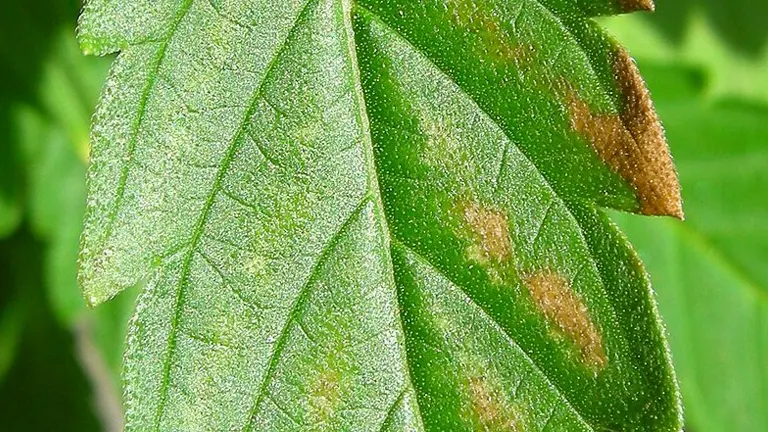
Early detection of fertilizer burn is crucial to mitigate damage and begin remediation. The initial symptoms often manifest subtly before progressing to more severe signs if unchecked.
1. Yellowing of Leaves (Chlorosis)
- Description: Initial yellowing typically appears at the leaf margins and tips and may involve interveinal areas, progressing towards the leaf base with time.
- Chlorosis in leaves often results from inhibited chlorophyll synthesis due to nitrogen, magnesium, or iron deficiencies caused by high salt concentrations displacing these nutrients in the soil.
2. Leaf Scorch
- Description: Leaf tips and margins may appear dry, brown, and burnt, resembling damage from high heat or fire.
- Scorching occurs due to dehydration effects as roots fail to absorb sufficient water to maintain plant turgidity, exacerbated by high osmotic pressure in the soil solution.
3. Wilting
- Description: Plants appear limp, droopy, and may not recover overnight. Wilting is not alleviated by watering.
- Impaired water uptake due to damaged or dysfunctional roots prevents water from reaching the leaves, leading to temporary or permanent wilting.
Advanced Symptoms
Should early signs be overlooked, the following more pronounced symptoms will develop, indicating severe distress and damage:
1. Brown and Crispy Leaves
- Description: Leaves become completely dehydrated and crispy, often turning a dark brown or black color, starting at the edges and progressing inward.
- This symptom indicates extreme dehydration and cell death in leaf tissues, resulting from prolonged water and nutrient uptake issues.
2. Severe Wilting and Stunted Growth
- Description: Plants exhibit irreversible wilting, do not grow as expected, and display stunted or halted growth; new leaves may be smaller and may die prematurely.
- Chronic water stress affects cellular growth processes, and toxic buildup of ions can inhibit cell division and enlargement, crucial for plant growth.
3. Visible Root Damage
- Description: Roots may appear blackened, slimy (a sign of root rot), or brittle, significantly reduced in mass and spread.
- Toxic salt concentrations can cause root cortex cells to die off, leading to decay; physical damage to roots reduces their functional surface area, affecting overall plant health.
Diagnostic Table
| Symptom | Visual Indicator | Possible Scientific Cause |
|---|---|---|
| Early Leaf Yellowing | Yellow tips/margins progressing inward | Displacement of Mg, Fe, N by salts |
| Leaf Scorch | Dry, browned margins and tips | Dehydration due to high osmotic pressure |
| Wilting | Limp, droopy posture; not relieved by watering | Root damage impairing water uptake |
| Crispy Leaves | Brown/black, dry, brittle texture | Severe dehydration and cell death |
| Stunted Growth | Slowed or halted growth, small new leaves | Inhibited cellular processes |
| Root Damage | Blackened, slimy, or brittle roots | Salt-induced cortex cell necrosis |
Treating Fertilizer Burn
Immediate Actions to Take
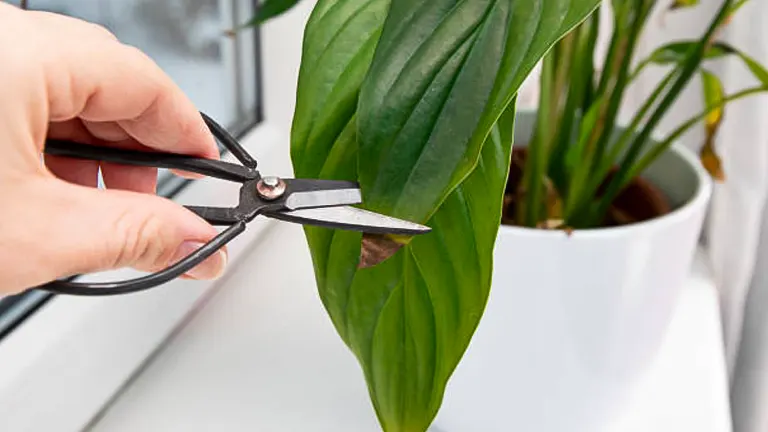
Once fertilizer burn is identified, quick and effective actions are necessary to mitigate damage and start the recovery process. These steps are critical in stabilizing the affected plants and preparing them for longer-term recovery efforts.
1. Watering to Flush Out Excess Fertilizer
- Deep Irrigation: Saturate the soil with water which helps to flush out excess salts. This requires deep, thorough watering rather than just superficial wetting. Aim to water deeply into the roots where most of the salts accumulate.
- Frequency: Repeat watering over a few days to ensure that salts are leached away from the root zone to a level where they won’t harm the plant.
2. Pruning Damaged Plant Parts
- Remove Dead Foliage: Cut back any leaves and stems that show significant signs of damage (e.g., crispy, brown leaves). This not only improves the plant’s appearance but also redirects the plant’s energy towards healthier parts.
- Avoid Over Pruning: Be conservative; remove only the parts that are clearly damaged so as not to stress the plant further.
3. Adjusting Soil Conditions
- Soil Amendments: Introduce organic matter like compost or peat moss to help dilute the concentration of salts in the soil and improve soil structure for better water retention and aeration.
- Re-testing Soil: After amending and flushing the soil, test it to check if the salt levels have reduced to a safe level. This helps in deciding whether it’s safe to resume regular fertilization schedules.
Long-term Recovery Strategies
Recovering from fertilizer burn is a gradual process that requires ongoing care and adjustment based on the plant’s response.
1. Gradual Reintroduction of Fertilizers
- Using Mild, Balanced Fertilizers: Once plants show signs of recovery, reintroduce a mild, balanced fertilizer at a reduced rate to avoid recurrence of burn.
- Slow-release Formulations: Opt for slow-release fertilizers, which are less likely to overload the soil with salts and provide a steady supply of nutrients over a longer period.
2. Monitoring Plant Health
- Regular Checks: Keep a close eye on the affected plants to monitor their recovery and any signs of returning symptoms.
- Adjust Care Routine: Based on the recovery, you may need to adjust watering practices, sunlight exposure, and overall plant care to support plant health.
Preventing Fertilizer Burn
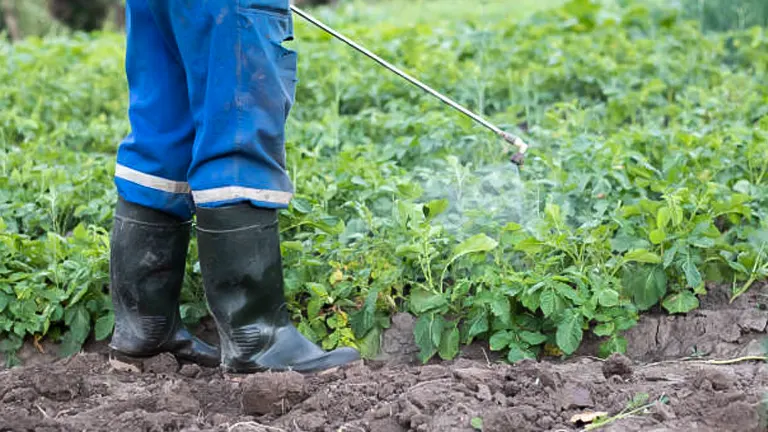
Preventing fertilizer burn is critical to maintaining healthy plant growth. The adverse effects of excessive fertilization, such as nutrient runoff, soil toxicity, and damaged plant tissue, can all be mitigated with the adoption of precise fertilization practices and diligent soil management.
Best Practices in Fertilization
Effective fertilization begins with understanding the specific needs of your plants and the chemistry of your soil. Here’s how you can optimize your fertilization practices:
1. Tailoring Fertilization to Plant Needs
- Specific Nutrient Requirements: Different plants have distinct nutritional needs which vary not only by species but also by the stage of growth (e.g., flowering vs. vegetative), health status, and environmental conditions. For instance, nitrogen is crucial during the leafy growth phase, while phosphorus is essential for root and flower development.
- Customized Fertilization Plans: Use the results of soil tests to determine the precise amount of each nutrient required. Over-application can be as detrimental as under-fertilization. Nutrient management software or consultation with a horticulturist can provide guidance tailored to your garden’s specific conditions.
2. Accurate Application Techniques
- Measured Application: Follow the guidelines provided on fertilizer packaging or those recommended by agricultural experts. Utilize tools like calibrated spreaders that help apply fertilizer evenly at the recommended rates.
- Strategic Placement: Apply fertilizer near the root zone — the area most capable of nutrient uptake. Avoid direct contact with plant foliage or roots, which can cause chemical burns.
Fertilizer Application Techniques
| Fertilizer Type | Application Rate (g/m²) | Optimal Application Method | Common Mistakes |
|---|---|---|---|
| Complete (N-P-K) | 60-200 depending on plant | Broadcast before planting, side-dress during growth phases | Applying too close to plant stems, over-application |
| Slow-release | 70-150 depending on plant | Incorporated into soil or as a top dressing | Uneven application leading to zones of high concentration |
| Liquid | Varies with concentration | Diluted in water, used during watering | Over-concentration in mixtures, frequent applications |
Cultural Practices to Enhance Soil Health
Improving soil health is a vital part of preventing fertilizer burn by ensuring a balanced, supportive environment for plant roots.
1. Organic Matter Integration
- Benefits of Organic Additives: Incorporating compost, manure, or leaf mold improves soil structure, enhances microbial life, and gradually releases nutrients, reducing the dependence on chemical fertilizers.
- Frequency and Methods: Annually integrate organic matter into the soil to a depth of 6-12 inches, especially before planting seasons.
2. Routine Soil Maintenance
- Aeration: This helps alleviate soil compaction, allowing roots to expand easily, improving drainage and reducing saline conditions.
- Mulching: Applying organic mulch around plants not only conserves moisture and regulates soil temperature but also decomposes over time to add nutrients back into the soil, creating a buffer against fertilizer burn.
Educational Sidebar: Understanding Fertilizers
Understanding the various types of fertilizers and their appropriate uses is crucial for preventing nutrient imbalances:
- Complete vs. Balanced Fertilizers: ‘Complete’ fertilizers contain N (nitrogen), P (phosphorus), and K (potassium), while ‘balanced’ refer to those where these core nutrients are in equal ratio, which might not always be needed by all plants.
- Slow-Release vs. Fast-Acting: Slow-release fertilizers reduce the risk of burn by providing nutrients gradually, over months rather than days, ideal for maintaining long-term nutrition without peak toxicities.
- Liquid Fertilizers: These are generally fast-acting, suitable for giving plants a quick nutrient boost, but should be used carefully as they can easily lead to fertilizer burn if not diluted properly.
Advanced Preventive Measures Against Fertilizer Burn

Preventing fertilizer burn involves more than just applying fertilizers correctly; it requires a comprehensive approach that prioritizes the health of both soil and plant ecosystems. By cultivating a self-sustaining garden ecosystem, gardeners can drastically reduce their reliance on synthetic fertilizers and diminish the risks associated with them.
Fostering Soil Microbiome Health
1. Promoting Beneficial Microbes
- Introduction to Soil Microbiology: Soil is not just an inert growing medium; it’s a vibrant ecosystem teeming with life. Microorganisms, including bacteria and fungi, are crucial for nutrient cycling and creating a robust plant root environment. These organisms help decompose organic matter, fix atmospheric nitrogen, solubilize phosphorus, and release other essential nutrients into forms that plant roots can absorb.
- Practices to Enhance Microbial Life:
- Organic Matter Addition: Regularly incorporate compost, decomposed leaves, and manure to feed soil microbes and improve soil structure.
- Reduced Tillage: Limit soil disturbance to preserve microbial habitats and reduce the carbon footprint of gardening.
- Mulching: Use organic mulches to conserve moisture, regulate soil temperature, and provide a steady nutrient release as they decompose, thereby fostering a stable, supportive soil environment.
2. Natural Fertilizers and Soil Amendments
- Using Organic Fertilizers: These fertilizers derive from natural sources such as plants, animals, or minerals and release nutrients more gradually than synthetic options, minimizing the risk of nutrient overload and promoting a balanced soil ecosystem.
- Biochar and Mycorrhizae Applications:
- Biochar: This highly porous carbon-rich material enhances soil’s water retention and nutrient holding capacity, supports soil microbial life, and helps sequester carbon in the soil.
- Mycorrhizal Inoculants: Applying mycorrhizal fungi promotes a symbiotic association with plant roots, increasing their effective surface area for water and nutrient absorption and enhancing plant resilience against stresses like fertilizer burn.
Impact of Soil Amendments on Microbial Health and Plant Resilience
| Amendment | Benefits | Recommended Application | Impact on Fertilizer Burn Prevention |
|---|---|---|---|
| Compost | Enhances microbial diversity, improves soil structure | Apply 2-4 inches annually | Reduces need for synthetic fertilizers, mitigates salt buildup |
| Biochar | Increases water retention, aids microbial habitat | Incorporate 5-10% by volume into the soil | Helps dilute soil salinity, buffers pH variations |
| Mycorrhizal Fungi | Extends root systems, enhances nutrient/water uptake | Apply during planting or mix with seed starters | Increases nutrient efficiency, reduces susceptibility to stress |
Implementing Companion Planting and Crop Rotation
1. Companion Planting
- Synergistic Plant Relationships: Certain plants can be paired to benefit each other. For instance, legumes fix nitrogen, enriching the soil for nitrogen-loving plants nearby. Marigolds emit natural chemicals from their roots that repel pests, protecting susceptible vegetables.
- Pest and Disease Suppression: Besides fixing nutrients, companion plants can help in pest management by either repelling pests naturally or attracting beneficial insects that prey on pests.
2. Crop Rotation
- Avoiding Nutrient Depletion: Regularly rotating crops prevents any single nutrient from being depleted from the soil, as different plants have varied nutrient requirements.
- Enhancing Soil Fertility and Structure: Rotating deep and shallow-rooted plants helps prevent soil compaction and maintains better soil structure, promoting healthier root development and efficient nutrient use.
Related Post
- How to Fertilize a Mango Tree Effectively: Tips and Tricks for Healthy Growth
- How to Fertilize Apple Trees: Essential Tips for a Bountiful Harvest
- How to Fertilize Lemon Trees: Secrets for Thriving Citrus
- How to Fertilize Avocado Tree: A Step-by-Step Guide for Lush Growth
- How to Fertilize Bougainvillea: A Complete Guide for Stunning Blooms
Conclusion
Fertilizer burn, while a common issue, can largely be prevented through thoughtful gardening practices that respect the balance of nature. By understanding the specific needs of your plants, applying fertilizers judiciously, and fostering a healthy soil ecosystem, you can create a vibrant garden that thrives with minimal chemical intervention.
FAQs
- What distinguishes fertilizer burn from other plant ailments like diseases or water stress?
Fertilizer burn is specifically caused by an excess of salts from over-fertilization, which leads to symptoms like yellowing and crisping of leaf edges, scorch marks, and wilt that does not improve with watering. Unlike diseases, which may cause mottling, spots, or varied discoloration, or water stress symptoms which typically improve after watering, fertilizer burn symptoms persist or worsen unless the excess salts are addressed. - How can I accurately measure soil salinity to prevent fertilizer burn?
Use a soil salinity tester or an electrical conductivity meter to measure the salt concentration in your soil. These devices give a reading that helps you understand if the current nutrient levels are too high. Regular testing allows you to maintain optimal salinity levels, thus preventing potential fertilizer burn. - What immediate steps should I take upon noticing signs of fertilizer burn?
Immediately stop any further use of fertilizer and irrigate the soil deeply and thoroughly. This irrigation process helps to leach out excess salts away from the root zone. Removing visibly damaged foliage and stems also helps plants recover more efficiently. - Can changing the type of fertilizer help reduce the risk of fertilizer burn, and what type should I use?
Yes, switching to fertilizers with lower salt indexes and those that are slow-release can significantly reduce the risk of fertilizer burn. Slow-release fertilizers provide nutrients at a pace that plants can absorb, preventing nutrient buildup that leads to burn. - How often should I flush my soil to prevent fertilizer buildup?
Flushing the soil to prevent fertilizer buildup should be done at least once or twice a year, depending on the crop, soil type, and intensity of fertilization. Regular flushing is especially important in potted plants or in regions with low rainfall where salts are not naturally leached away. - Are organic fertilizers less likely to cause fertilizer burn compared to synthetic ones?
Organic fertilizers generally have a lower risk of causing fertilizer burn because they release nutrients more slowly. However, it’s still possible to over-fertilize with organic products. Proper application according to the needs of your specific plants and soil is crucial. - What are the long-term effects of repeated fertilizer burn on plants?
Repeated fertilizer burn can severely stunt plant growth, cause chronic root damage, and diminish soil health, making plants less robust and more susceptible to diseases and pests. Long-term soil fertility can also be compromised, requiring extensive soil remediation efforts. - Can mulching help in preventing fertilizer burn, and if so, how?
Mulching is highly effective in preventing fertilizer burn as it helps maintain soil moisture and temperature, reduces runoff, and gradually breaks down to add nutrients slowly to the soil. Organic mulches like bark or straw are especially beneficial as they help absorb excess fertilizer and moderate its distribution in the soil.
This guide is designed to offer you essential tips for identifying and treating fertilizer burn, guiding you towards nurturing your plants to their fullest potential. Here’s to a garden brimming with vibrant, healthy plants!

Emma Hudson
Forestry AuthorEmma's experience in farming shapes her detailed guides on gardening and farming tools, providing practical, actionable advice grounded in real-world experience. Her work targets both newcomers and experienced farmers, aiming to enhance their practices with a mix of traditional wisdom and modern techniques. By making complex agricultural concepts accessible, Emma's guides serve as valuable tools for those navigating the challenges of contemporary farming, offering strategies for sustainable success.


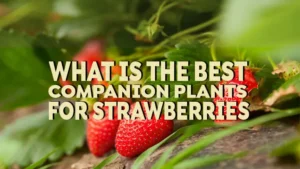
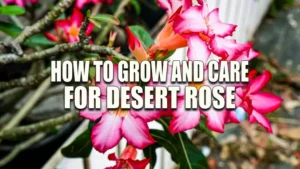




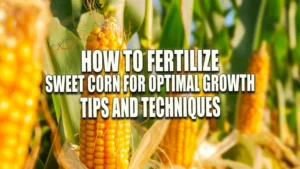
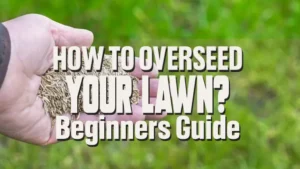


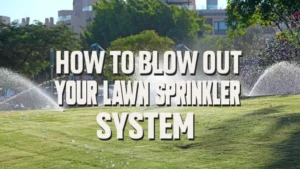
Leave your comment